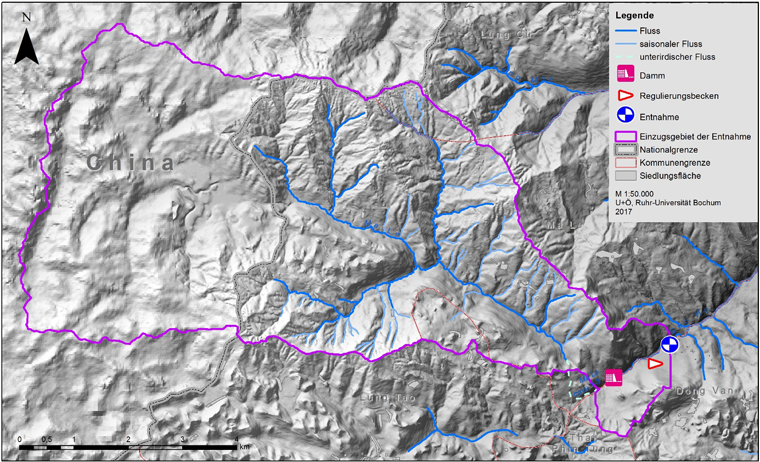GIS-Based Water Protection Measures

Background
Within the scope of a long-term monitoring project, particle transport and the chemical and microbiological quality of the karst water taken from the sampling location of the Seo Ho Pilot Pump Plant were comprehensively tested and analyzed. It could thus be demonstrated, as expected, that neither the limits at the machinery regarding the permissible solids load nor the standards of the World Health Organisation (WHO) regarding the required minimum raw water quality can be complied with permanently.

To reduce the particulate load in the water sample, various measures were developed and implemented to comprehensively renovate the existing hydro-engineering infrastructure of the Seo Ho Pilot Plant as well as to significantly increase its retention capacity. Operational monitoring of this value, which is important for the functionality of the machines and occurs with the aid of a monitoring system with an integrated turbidity probe, is one of the aforementioned measures.
Objective
In order to also be able to meet the challenges associated with limited microbiological quality, there are plans to implement a double strategy. On the one hand, the sources of pollution as well as the locations particularly endangered as regards water quality within the drainage basin of the Seo Ho river shall be identified and comprehensively documented. Furthermore, the vulnerability and hazard maps thus prepared will be merged to create a risk map for the affected area as a basis for planning suitable prevention measures such as the designation of protected areas etc. Research on water protection measures in the project region have indeed shown that simple regulations already exist in Vietnam e.g. for establishing drinking water protection zones. However, since they are usually applied only to a limited extent or not at all, there is immense need for improvement regarding the practicability of the current set of rules. On the other hand, to immediately guarantee adequate drinking water quality, drinking water treatment adapted to local conditions shall be implemented at the same time as these precautionary measures that are effective in the long run.
Also of overriding importance are the plans for providing and continuously upgrading a practicable "Specialist Information System for Drinking Water" (SIS DW). This tool shall contain all the relevant findings regarding pollutant sources, contamination risks etc. in the project region, with it being able to serve as an ideal basis for planning for local decision-makers in the water sector.
